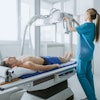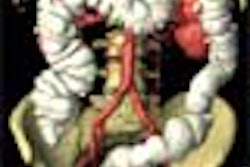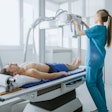
Get an old-timer talking about baseball injuries and he’ll likely mention right away how pitchers used to be much tougher. They pitched on three days of rest instead of four, finished what they started without paying any attention to pitch counts, and certainly didn’t spend a month every season on the disabled list.
Grizzled pitching coaches say today’s pitchers need to pitch and throw more -- to build up arm strength and ward off injury. But physicians think otherwise.
"The biggest injury concern from our perspective is ... young pitchers and overuse injuries," according to Dr. Barry Goldberg, chairman of the medical and safety advisory committee for the USA Baseball Olympic organization and director of sports medicine at Yale University Health Services.
"It appears there is a significant growth in shoulder and elbow problems, related to multiple variables, but the most important is that pitchers are not using the best biomechanics," Goldberg stated in an interview with AuntMinnie.com.
Throwing a baseball overhand, much less hurling a 92-mile an hour slider, is not a natural motion. Pitchers subject their arms to extreme and violent stresses 100 or more times a game. In an elite thrower, the internal rotation velocity of the arm during the accelerated throwing phase reportedly reaches more than 7,000 degrees per second.
Such severe torque, and a tendency toward shoulder muscle hypertrophy, puts baseball pitchers and other throwers at increased risk for various neurovascular conditions, including digital ischemia, thoracic outlet compression, and quadrilateral space syndrome (QSS), which can be particularly tough to diagnose.
Located in the back of the shoulder, the quadrilateral space is bordered on four sides by the humeral shaft, the triceps, the teres major muscle and tendon, and the teres minor. QSS occurs when any of these structures impinges the axillary nerve or occludes the posterior humeral circumflex artery, both of which run through the quadrilateral space.
QSS is a tough diagnosis for several reasons. For one, the symptoms are similar to those of thoracic outlet syndrome and simple rotator cuff injuries.
In addition, "the pain and paresthesias (associated with QSS) are poorly localized and nondermatomal," according to a study co-authored by Dr. Jeffrey R. Dugas, an orthopedic surgeon and clinical instructor in orthopedic sports medicine at the American Sports Medicine Institute in Birmingham, AL (Hand Clinic, August 2000, Vol. 16:3, pp. 477-485).
"You need to have a reasonable index of suspicion to check the quadrilateral space," Dugas said in a recent interview with AuntMinnie.com. "We see people with pain in their shoulder 15 times a day. Although it’s not the first thing that comes to mind, it’s not terribly uncommon. We see it a couple of times a year."
Diagnosis starts with a clinical exam, prompted by a patient with shoulder discomfort accompanied by shooting pains down the back or tingling in the hand. The spectrum of imaging techniques can be used to confirm the diagnosis, but difficulties exist with each modality.
"You always do plain x-rays to rule out a loose body or tumor, but there’s no specific test to confirm your thought process," Dugas said. Still, "imaging is probably the best way to confirm the diagnosis."
Standard MRI may reveal teres minor atrophy, but that finding doesn’t point toward a specific diagnosis. MR angiography is effective if the patient is tested in the prone position with a cocked arm, because only then is the kinking or occlusion of the posterior humeral circumflex artery evident. But the resultant dampening of the radial pulse in this position occasionally leads to a misdiagnosis of thoracic outlet syndrome.
"Even the best radiologist may have trouble seeing the symptoms," Dugas said. "The saying around the clinic is that this is one of those injuries that sees us a lot more than we’re seeing it."
In its early stages, the condition might present as the "dead arm" syndrome that pitchers and their coaches usually correct with adjustments to mechanics and delivery. It may also occur in a first baseman who doesn’t throw very much and never feels any symptoms.
"We see this maybe six or eight times a year in all of professional baseball, and we’re talking about thousands of players," Dugas said. The usual course of treatment is conservative -- a combination of rest, physical therapy, and anti-inflammatory drugs. Decompression surgery is a last resort.
The literature on QSS is relatively young: It’s the kind of injury that old-timers will say didn’t exist in their day, along the lines of the high-ankle sprain. But Goldberg says that baseball’s injuries have changed along with the game.
"Kids (today) are stronger and putting more stress on their joints, and they're throwing more in multiple leagues and year-round," Goldberg said.
"It’s a natural progression from age 10 or 12 to 18 or 19, and kids aren’t coming to USA Baseball with virginal arms," Goldberg noted. "A lot of them have a lot of injury baggage."
By Matt King
AuntMinnie.com contributing writer
August 27, 2004
Related Reading
Ultrasound could help pitchers stay in the game, April 21, 2003
X-rays and the boys of summer: Imaging goes to bat for baseball injuries, April 15, 2003
Common extensor tendon ultrasound aids in tennis elbow imaging, March 6, 2003
Copyright © 2004 AuntMinnie.com


















